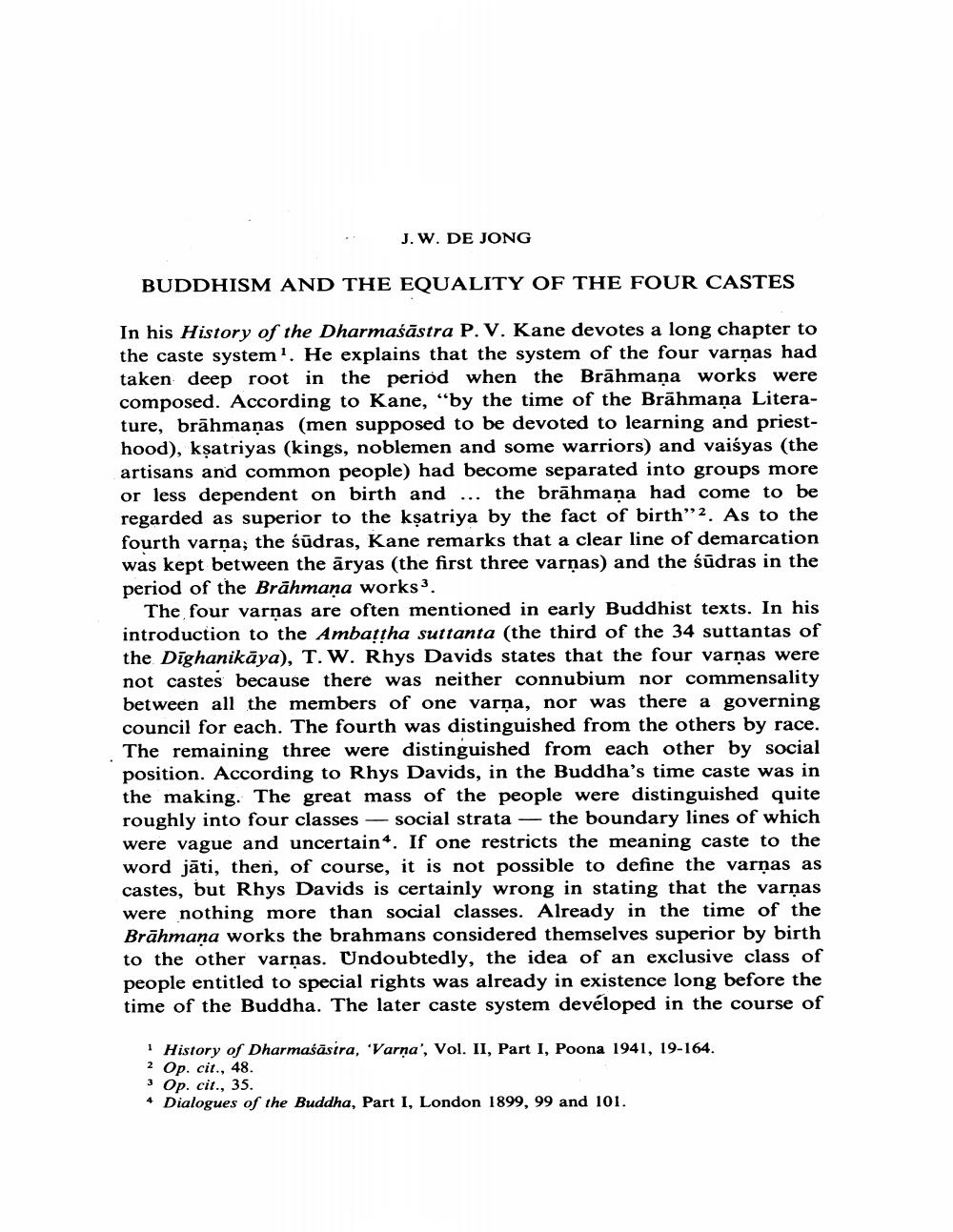Book Title: Buddhism And Equality Of Four Castes Author(s): J W De Jong Publisher: J W De Jong View full book textPage 1
________________ J. W. DE JONG BUDDHISM AND THE EQUALITY OF THE FOUR CASTES In his History of the Dharmaśāstra P.V. Kane devotes a long chapter to the caste system'. He explains that the system of the four varṇas had taken deep root in the period when the Brāhmaṇa works were composed. According to Kane, “by the time of the Brāhmaṇa Literature, brāhmaṇas (men supposed to be devoted to learning and priesthood), ksatriyas (kings, noblemen and some warriors) and vaiśyas (the artisans and common people) had become separated into groups more or less dependent on birth and ... the brāhmaṇa had come to be regarded as superior to the ksatriya by the fact of birth"2. As to the fourth varņa; the śūdras, Kane remarks that a clear line of demarcation was kept between the āryas (the first three varņas) and the sūdras in the period of the Brāhmana works. The four varņas are often mentioned in early Buddhist texts. In his introduction to the Ambattha suttanta (the third of the 34 suttantas of the Dīghanikāya), T. W. Rhys Davids states that the four varņas were not castes because there was neither connubium nor commensality between all the members of one varņa, nor was there a governing council for each. The fourth was distinguished from the others by race. The remaining three were distinguished from each other by social position. According to Rhys Davids, in the Buddha's time caste was in the making. The great mass of the people were distinguished quite roughly into four classes — social strata — the boundary lines of which were vague and uncertain. If one restricts the meaning caste to the word jāti, then, of course, it is not possible to define the varņas as castes, but Rhys Davids is certainly wrong in stating that the varņas were nothing more than social classes. Already in the time of the Brāhmaṇa works the brahmans considered themselves superior by birth to the other varņas. Undoubtedly, the idea of an exclusive class of people entitled to special rights was already in existence long before the time of the Buddha. The later caste system developed in the course of · History of Dharmaśāsira, 'Varna', Vol. II, Part I, Poona 1941, 19-164. 2 Op. cit., 48. 3 Op. cit., 35. * Dialogues of the Buddha, Part I, London 1899, 99 and 101.Page Navigation
1 2 3 4 5 6 7 8 9
